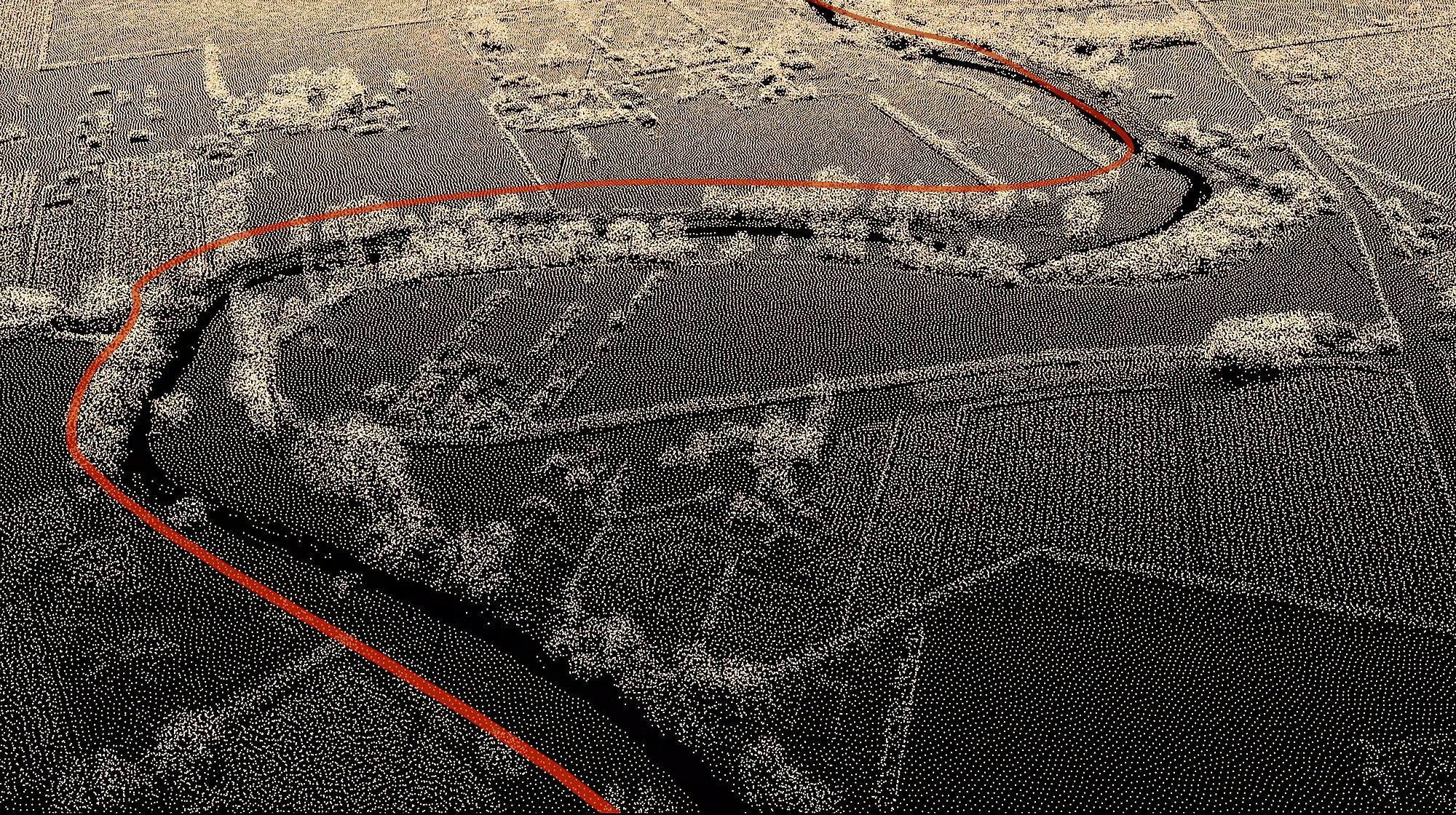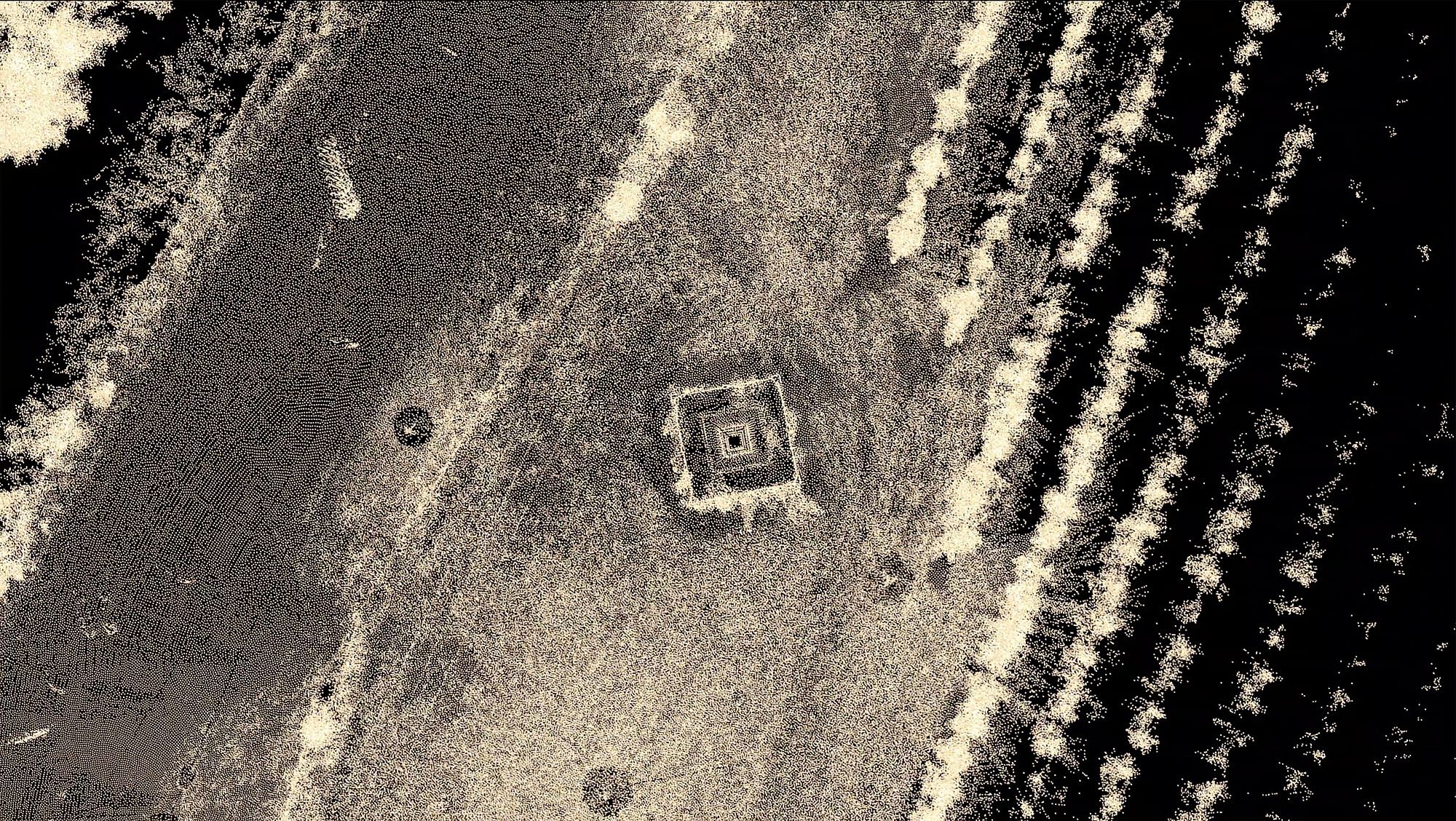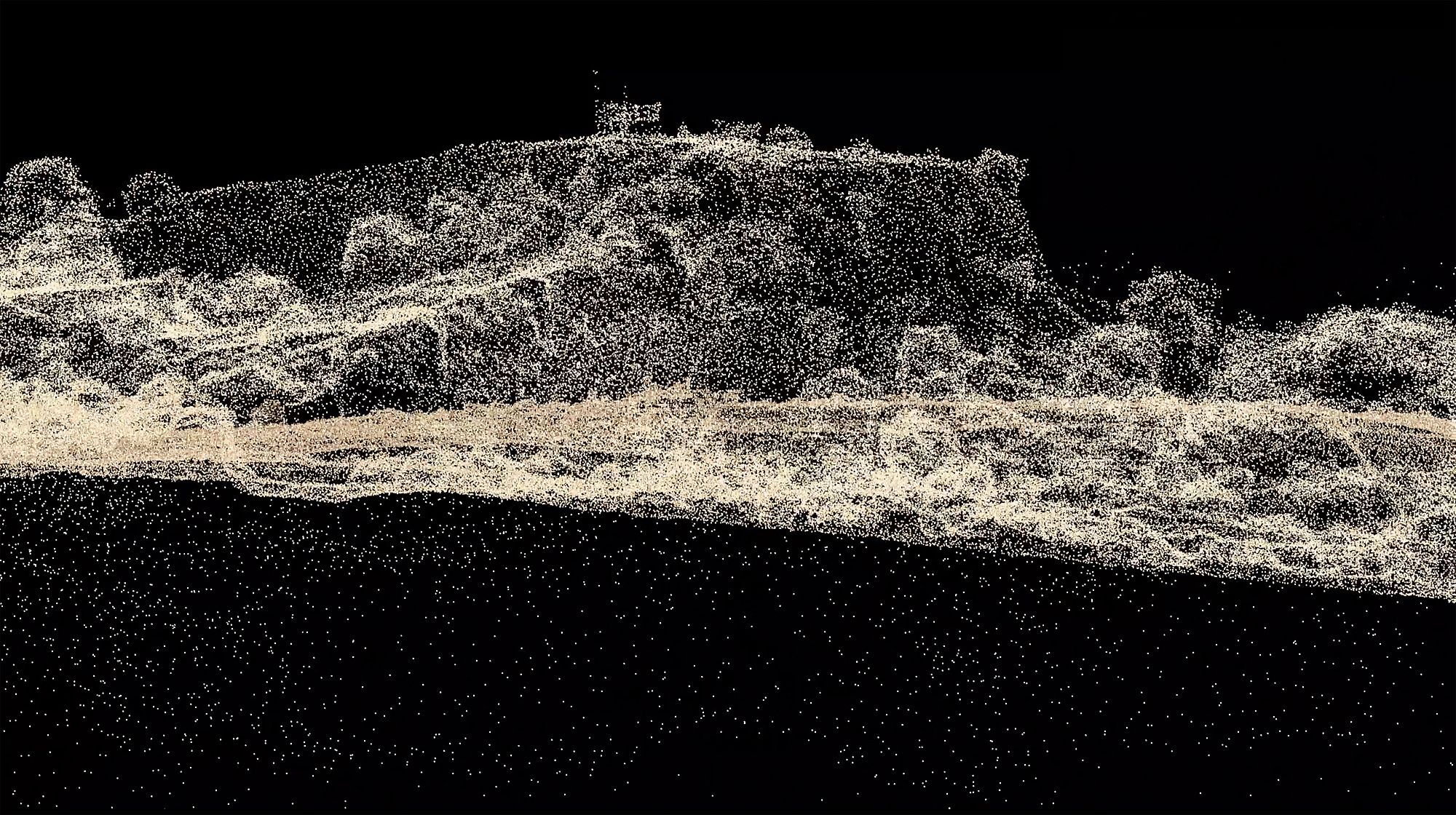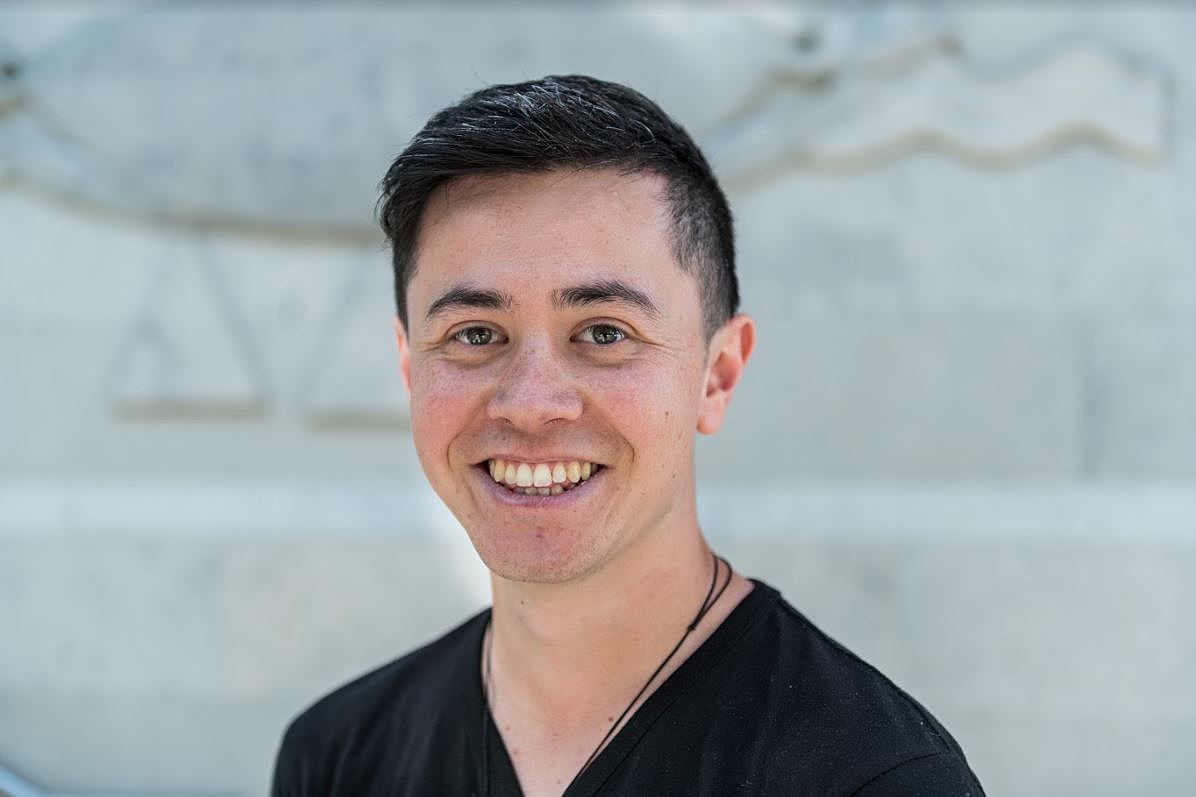Heretaunga Haukū nui
Brook Konia on Russ Flatt's new moving image, Te ahua, te wa, te atea, which depicts the transformation of the whenua in Heretaunga, and ruminates on the broad history of land sales in the area.
Heretaunga Haukū nui
Heretaunga Ararau
Heretaunga Haaro o Te Kaahu
Heretaunga Takotoa noa
Heretaunga of life giving dew
Heretaunga of Arcadian pathways
Heretaunga, beauty of which can only be seen by the Hawk
Heretaunga that has been left to us the humble servants
This centuries-old Heretaunga whakataukī is the vision behind Te ahua te wa te atea, a new moving image work by Russ Flatt (Ngāti Kahungunu) currently adorning MTG Hawkes Bay Museum's exhibition space linkway wall.
Russ Flatt's art practice has always expressed and communicated an awareness of contemporary Aotearoa identity, contemplating political realities, social constructs, and ethnic diversity.
Russ Flatt's art practice has always expressed and communicated an awareness of contemporary Aotearoa identity, contemplating political realities, social constructs, and ethnic diversity.
Ruminating in the broad histories surrounding land sales and development in Hawke's Bay, and the Hawke's Bay Native Lands Alienation Commission report published in 1873, the kaupapa of this moving image work places Russ as the maestro sharing Heretaunga local histories he learned first-hand from oral histories by descendants of 19th-century change-makers such as Tareha and Te Hāpuku.
This eight-minute long moving image work departs from Russ's usual staged portraiture photography, and projects constellations of ethereal photogrammetry with point cloud lens mapping and 3D LiDAR scanner film technologies.These constellations are counterposed with real-time aerial drone footage, drawing on collective memory and histories and visualising them against the present.
Ōmarunui, 2022. Russ Flatt. Photographic print on Hahnemühle rag paper 260mm x 495mm. Image courtesy of MTG Hawke's Bay.
Dark voids call forth areas of mana and wāhi tapu in Te Matau a Māui: Ōtātara pā, the Karamu reservation, Tanenuiarangi meeting house, Te Awarua o Porirua, Ōmaranui and Pākowhai. Each is extremely important for iwi who lived there and are places whānau have been alienated from through Pākehā settlement—connecting the beginning of time to now, as a throughline to te Kore te Po te Whaiao ki te ao Marama that reveals the whenua, trees, hills and rivers of these important spaces.
Te ahua, te wa te atea begins by opening to a big maunga of beautiful curvature. This is Te Wheao, a taonga never compromised by land grabs and still in iwi ownership, remembered within Kahungunu rangatira whakapapa as where they came from before their ancestors moved to the Heretaunga.
The work shifts from the constellation to real-time black and white footage. Te ahua te wa te atea invokes the eyes of the kahu hawk with soaring camera views captured from above with drone footage to reveal the present state of the whenua. It discloses its ancient Kahungunu and Heretaunga whakapapa. We inherit the hills and their histories. We can remember the stories if we listen to them and share them.
We inherit the hills and their histories. We can remember the stories if we listen to them and share them.
Te ahua, te wa, te atea examines the colonial, industrial and urban transformation of the whenua in the Heretaunga area. The whenua compares its shape and form to how it has looked before. This moment lets us contemplate our current urban identity. Ōtātara Pa's position and grand clear view of the surrounding whenua is circled around in its scene. Its quarried incisions and earthfall from a quake in 1931 pass beneath. In another scene, the Pākowhai roundabout comes into clarity halfway through the work. Pākowhai is one of the first places that Kahungunu came to when they first settled here. Now the roundabout is a melting pot and segue that allows quick travel from Napier to Hastings and Havelock North. The fade from the 3D scan of the whenua to captured moments of cars going by lets these histories coalesce and readdress memory in the whenua. As cars become clearer, driving around the roundabout, we do not see where they go, just that they pass by. As we shift to the stark reality of the drone footage, the weight of these histories sinks in.
Ōtātara Pā, 2022. Russ Flatt. Photographic print on Hahnemühle rag paper 260mm x 495mm. Image courtesy of MTG Hawke's Bay.
From this, we can question if we are charting a path that nurtures all we have? It is easier to remember remedial care for roads, buildings and train tracks. What will remain for us if we let the stories of our whenua fade?
What will remain for us if we let the stories of our whenua fade?
Following this, our view is raised, and we overlook the survey area of the Heretaunga block. Russ spent time listening to kaumatua, people living all around Heretaunga, and looking at old survey maps housed at the MTG museum archives. Through this, he learned many first-hand stories of colonisation's effects in Heretaunga. Ōmaranui Memorial and Karamu reservation recall government land purchase and selling, attacks on Hauhau and Pai Marire, gun and ammunition invoices and debts. These histories permeate the bloodshed, contentious histories, and ongoing effects of colonisation in the whenua and give potency to the question, "How do we move forward from this?"
There are no words or text in this moving image work. Instead, it is a felt response to this place. The whirring of a purerehua thrums. High pitch tones wane in and out in volume—puhoro tune in and pataratara bellow. These sounds bring a meditative clearing to harmonise with the imagery of Heretaunga. Te ahua, te wa, te atea clears a space for learning, sharing stories, and taking hold of the memories within the whenua. To service the needs of the present but also merge the divisions the whenua has through present-day eyes, into a realm of spiritual remembrance and reverence. The past, present and future weave into one—this cleared space highlights and locates us in the now.
We can work together to determine the future.
We can work together to determine the future. Learn of the pathways taken and speak the names to nurture the whenua, learn its stories, and speak its names. Whenua is everything. What is it when it is taken or stripped or not here anymore?
Respect and humility for the mauri, mana, and tapu of Heretaunga are woven together in Te ahua, te wa, te atea. The locations shared in this single-channel work restore and teach us to overcome colonisation's process of dispossession, offering the opportunity to discuss where to go from here—opening conversations that set us on a pathway, with a vision for pastoral and horticultural harmony with nature. Our maunga, whenua, and awa are monuments of belonging. The values and hopes within them can provide the basis for a non-colonising future, healing fractured and contentious histories.
Russ Flatt
Te ahua, te wa, te atea
MTG Hawke's Bay Museum
14 May – 28 August 2022
This essay was originally commissioned for MTG Hawkes Bay.
Header image: Karamu Reservation, 2022. Russ Flatt. Photographic print on Hahnemühle rag paper 260mm x 495mm.



